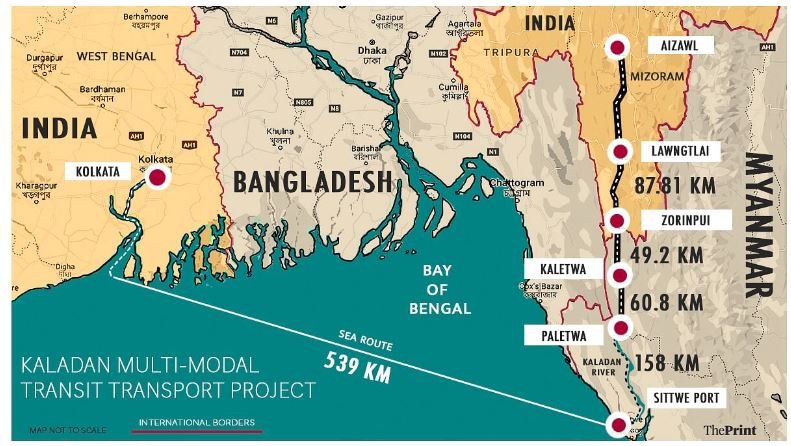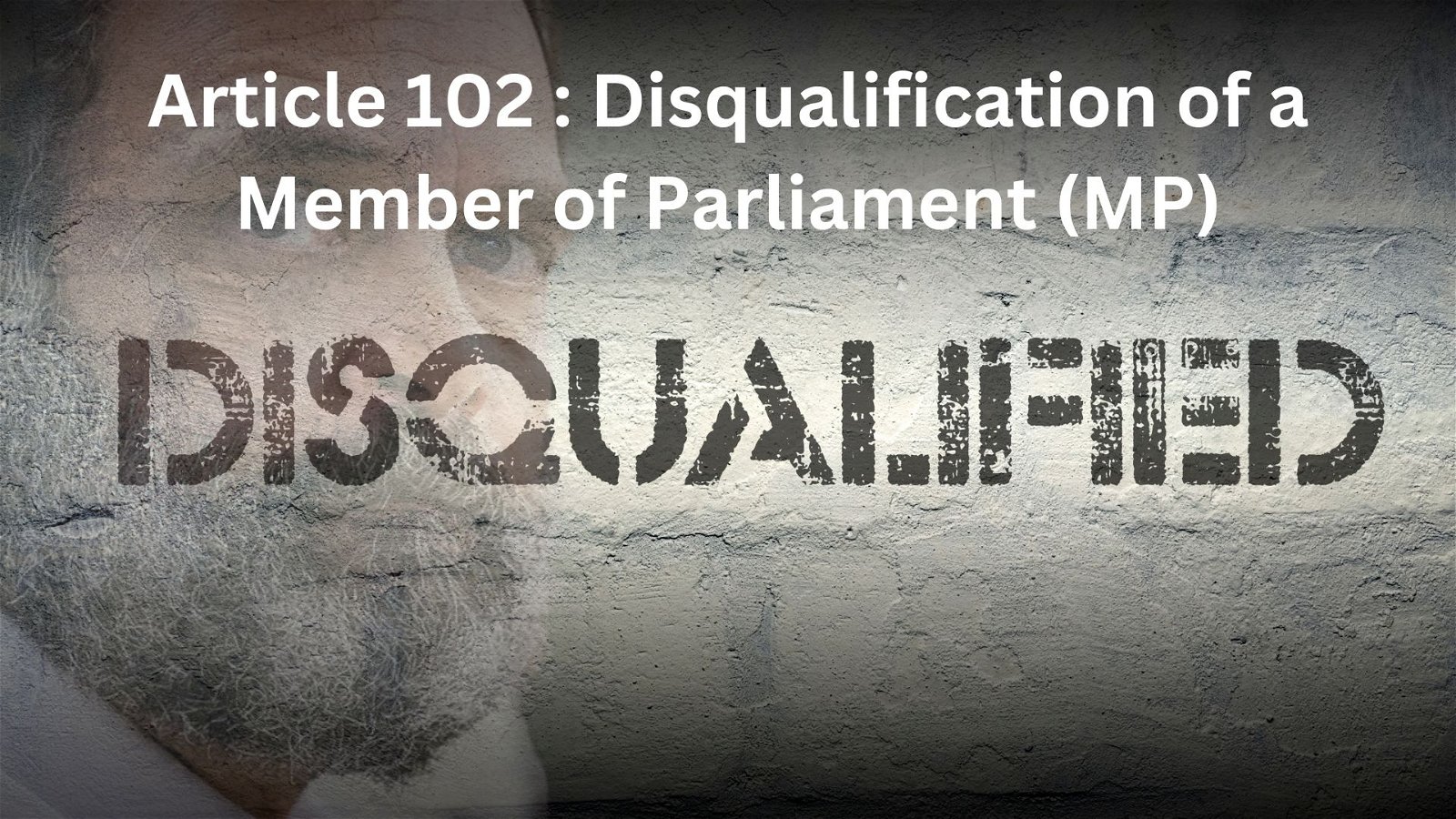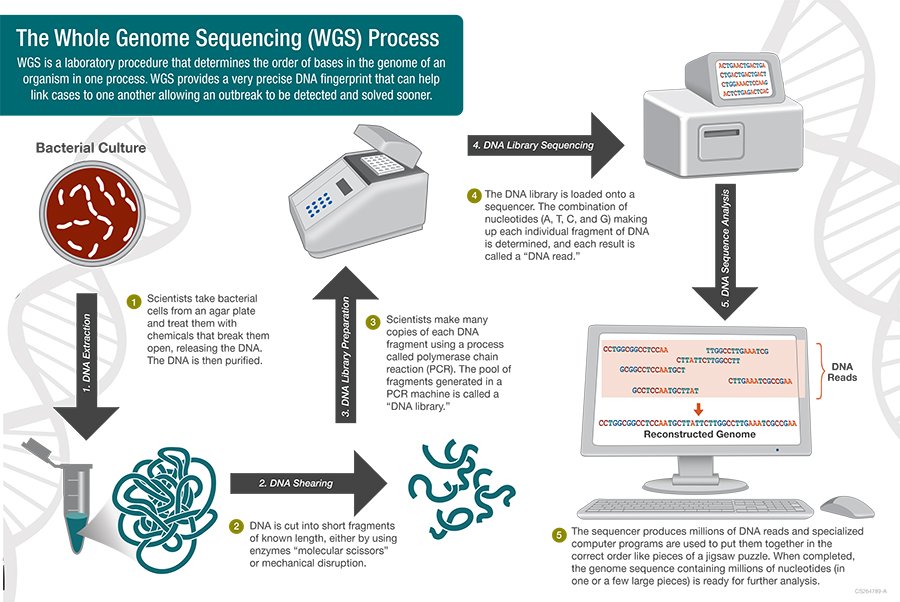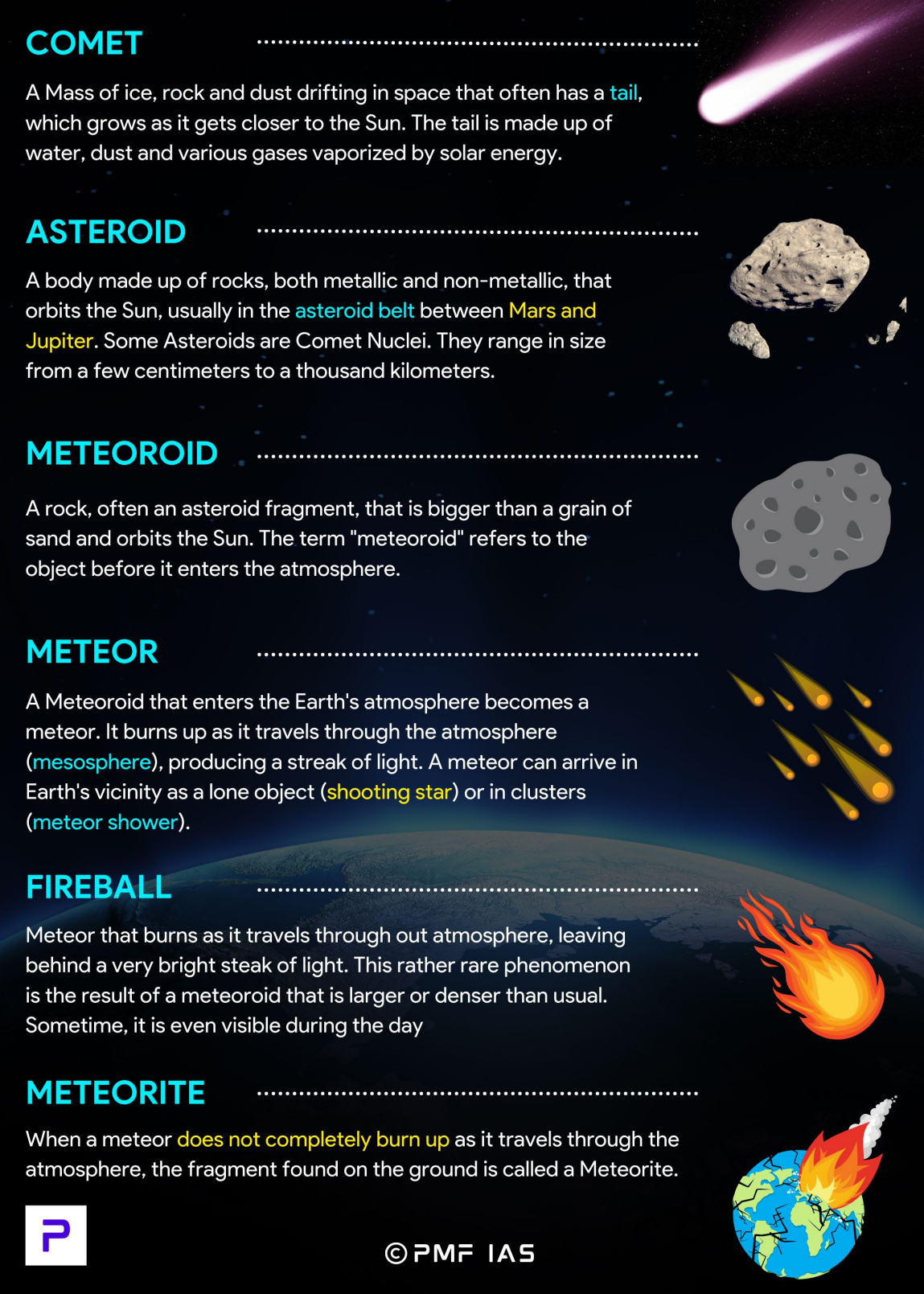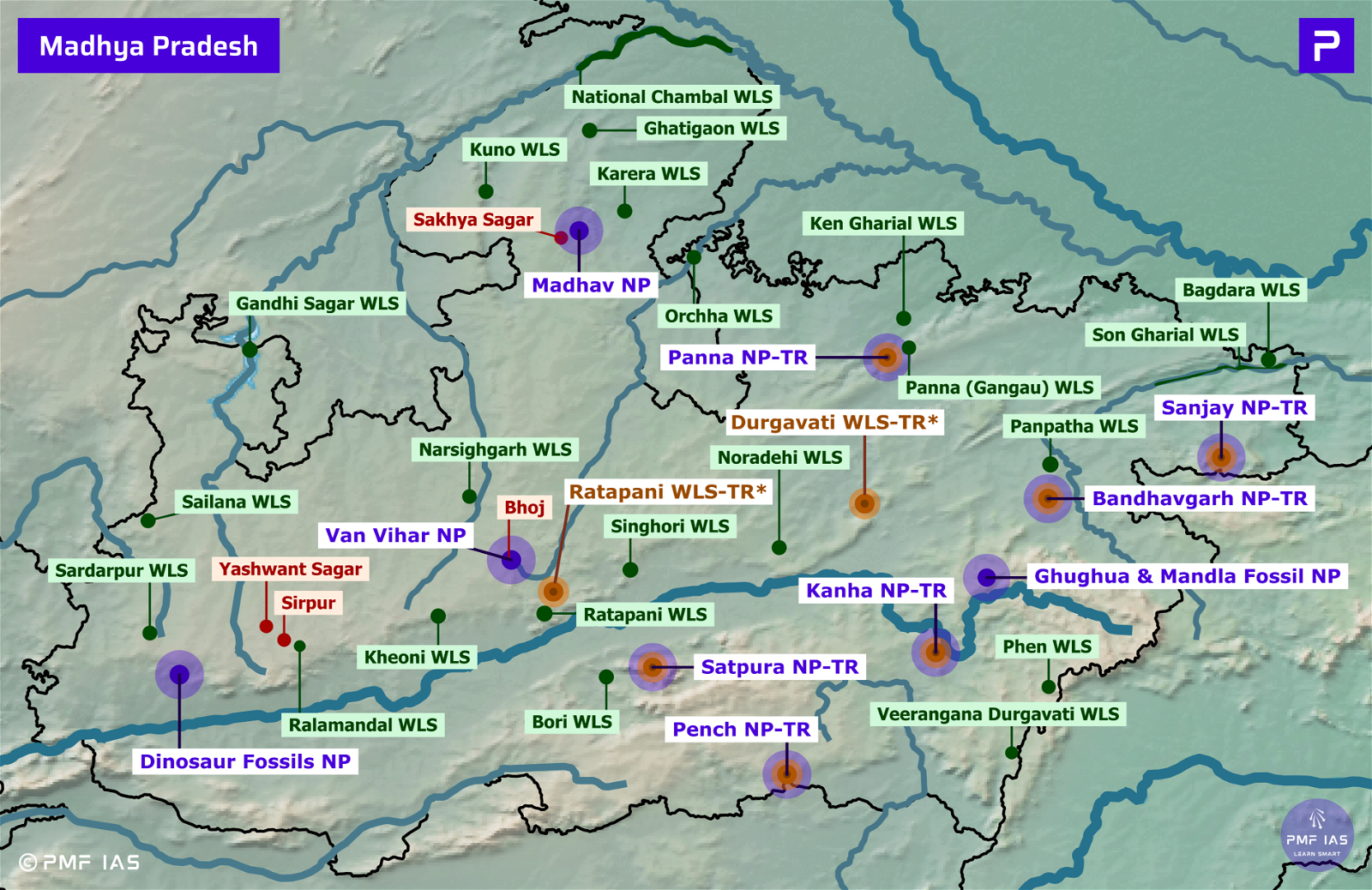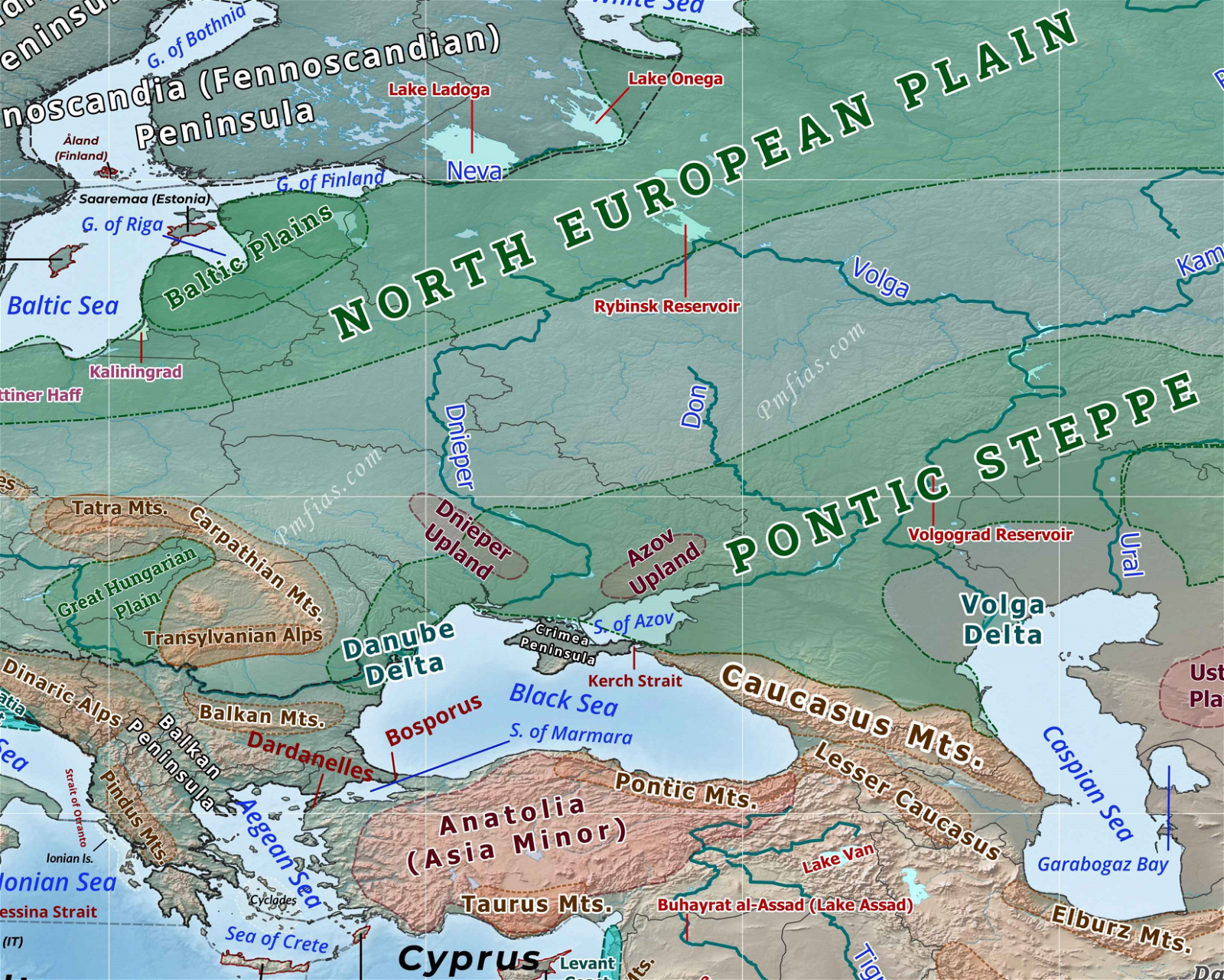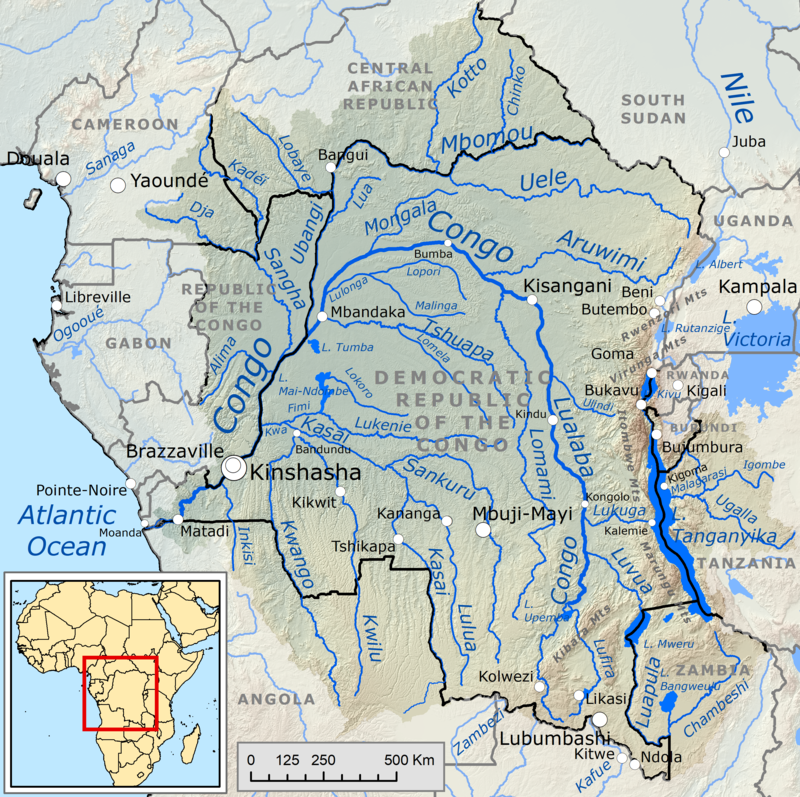
Current Affairs December 03-04, 2023: INTERPOL, Anthrobots, Global Initiative of Academic Networks (GIAN), Tuberculosis, Guidelines on Dark Patterns
Subscribers of "Current Affairs" course can Download Daily Current Affairs in PDF/DOC
Subscribe to Never Miss an Important Update! Assured Discounts on New Products!
Must Join PMF IAS Telegram Channel & PMF IAS History Telegram Channel
{GS2 – IR – India-Maldives} India’s Withdrawal of Troops from Maldives
- Context (TH): India has agreed to withdraw Indian military personnel stationed in Maldives.
India-Maldives Ties: Convergences
Recent Connectivity Measures
- $500 million Greater Malé Connectivity Project (GMCP): The largest civilian infrastructure project in the Maldives, connecting Malé with 3 neighbouring islands.
- Direct cargo ferry service between Cochin to Male: To provide predictability in supplies for importers in Maldives and exporters in India.
- Air travel bubble: To facilitate people’s movement for employment, tourism & medical emergencies.
Political and Strategic Front
- Both countries have reaffirmed their commitment towards “India first policy”.
- Both countries are part of UN, Commonwealth, NAM, and SAARC.
- Maldives extends its full support to India’s entry into the UNSC as a permanent member, while India supports Maldives entry as non-permanent member.
Defence and Security Cooperation
- A comprehensive Action Plan for Defence was signed in 2016 to consolidate defence partnership.
- India provides the largest number of training opportunities for Maldivian National Defence Force (MNDF), meeting around 70% of their defence training requirements.
- The joint military exercise ‘Ex Ekuverin‘ between the Indian Army and the Maldives National Defence Force is conducted annually.
Economic and Trade
- India and Maldives signed a trade agreement in 1981, which provides for export of essential commodities.
- India emerged as Maldives’ 3rd largest trade partner in 2021. India‐Maldives bilateral trade crossed the $300 MN mark for the first time in 2021.
- A Bilateral USD Currency Swap Agreement between RBI and Maldives Monetary Authority in 2019.
Tourism
- The tourism sector of Maldives is the major source of foreign exchange earnings and accounts for about 75% of the government’s revenue.
- India was the 5th largest source of tourists in 2018, which raised to the top-most source in 2022.
Education and Capacity Building
- India has traditionally offered a substantial number of scholarships to Maldivian youth under ICCR, “India Science and Research Fellowship (ISRF) Programme and ITEC programme.
India-Maldives Ties: Divergences
- Political volatility: Continued fluctuation between “India First” policy, and the ‘India Out’ campaign.
- Territorial security: Combined impact of Political instability, Economic crises, Islamic Radicalization (in Maldives) has led to threat of Terrorism, jeopardising security & development within India and its neighbourhood.
- Rising influence of Pakistan-based madrassas and Al Qaeda, recent attack on Md. Nasheed, a pro-democracy & pro-India leader.
- Non-traditional challenges: Including piracy, maritime terrorism, smuggling, human trafficking etc.
- China’s rising assertiveness in IOR: for e.g., Belt & Road initiative, infrastructure projects, port development, military cooperation etc.
Way Forward
- Strengthen bilateral relations: Both the countries need to strengthen cooperation on common agendas – trade & development, maritime security, climate change, capacity development, people-to-people relations, defense cooperation, Islamic extremism etc.
- Increase Investment: India can maintain its political influence in South Asia only if with a strong economic presence must quickly move to conclude pending FTAs with neighbouring nations.
- Promoting Maldives’ “Blue Economy” can be a key to booting economic ties & island development.
- Timely execution of developmental projects may serve to improve India’s credibility vis a vis China.
- Policy Change: India’s “wait and watch” policy needs a re-look and proactive responses must be crafted to support development and stability in Maldives.
{GS2 – IR – International Organisations} INTERPOL
- Context (PIB): The 91st General Assembly of the Interpol was held in Vienna.
- It is an international organisation that facilitates cooperation and collaboration among law enforcement agencies from different countries to combat transnational crime.
- It is the world’s largest international police organisation, established in 1923.
- It is headquartered in Lyon, France.
- It has 196 member countries (including India).
- It is headed by the Secretary-General, appointed by the General Assembly.
Organisational Structure
General Assembly
- It is Interpol’s highest decision-making body, with one delegate from each member nation.
Executive Committee
- It is the governing body overseeing the implementation of General Assembly decisions as well as the administration and activities of the General Secretariat.
General Secretariat
- It is the organisation in charge of coordinating the policing and administrative functions.
- It manages Interpol’s day-to-day operations to assist member nations with international policing.
National Central Bureau (NCB)
- The National Central Bureau is the focal point for all Interpol activity in a nation.
- It helps investigate crime in their own country and share criminal data to assist another country.
- The Central Bureau of Investigation (CBI) is designated as the National Central Bureau of India.
Functions
- Facilitates cross-border police cooperation.
- Prevents and combats transnational crime.
- Provides support through information sharing, coordination, and collaboration.
- Serves as a global communication hub for law enforcement agencies by providing secure platform for sharing information, intelligence, and alerts related to criminal activities.
- It maintains several global databases containing information on various types of crimes, including terrorism, human trafficking, drug trafficking, cybercrime, etc.
- It issues color-coded notices to alert member countries about individuals wanted internationally, missing persons, and threats.
Major Interpol Notices

{GS2 – MoE – Schemes} Global Initiative of Academic Networks (GIAN)
- Context (TH): The Centre approved the fourth phase rollout of the GIAN Scheme.
- The scheme was launched in 2015.
- Nodal ministry: Ministry of Education.
- It enables the interaction of students and faculty with the best academic and industry experts worldwide and also share their experiences and expertise to motivate people to work on Indian problems.
- It is a system of Guest Lectures by internationally and nationally renowned experts targeted towards a comprehensive Faculty Development Programme.
- The duration of the courses differs for different courses. While the minimum duration is one week, the maximum is 3 weeks.
Objective
- It aims to tap the talent pool of scientists and entrepreneurs internationally to encourage their engagement with the institutes of Higher Education in India.
- To augment the country’s existing academic resources, accelerate the pace of quality reform, and elevate India’s scientific and technological capacity to global excellence.
{GS2 – MoEFCC – Organisation} Indian Council of Forestry Research and Education
- Context (ET): IFS Kanchan Devi has become the first female officer appointed as the Director General (DG) of the Indian Council of Forestry Research Education (ICFRE).
- ICFRE was established in 1986 to provide direction and management to forestry research and education in India.
- In 1991, it was declared an autonomous council under the then Ministry of Environment and Forests (MoEFCC) and registered as a Society under the Societies Registration Act of 1860.
- It is headquartered in Dehradun, Uttarakhand.
- Aim: To achieve long-term ecological stability, sustainable development and economic security through conservation and scientific management of forest ecosystems.
- ICFRE is administering the Green Credits Programme (GCP).
Green Credits Programme (GCP)
|
For details on Green Credits Programme and Green Credit Initiative > 2nd December 2023 CA
{GS2 – MoHUA – Initiatives} GOBARdhan Scheme
- Context (PIB | PIB): The Ministry of Housing and Urban Affairs (MoHUA) is organising the SBM-GOBARdhan Biogas Conference.
- Galvanizing Organic Bio-Agro Resources Dhan (GOBARdhan) is an umbrella initiative of GoI.
- It is based on the whole of government’s approach.
- It aims to convert waste to wealth towards promoting a circular economy.
- It was launched by the Ministry of Jal Shakti in 2018 as a part of the biodegradable waste management component under the Swachh Bharat Mission (Grameen).
- GOBARdhan is executed in partnership with state governments and the private sector.
Ambit of GOBARdhan Scheme
- It covers all schemes/programmes/policies promoting the conversion of organic waste (like cattle dung and agri-residue) to biogas/Compressed Biogas (CBG)/Bio-Compressed Natural gas (Bio-CNG).
- It includes schemes and programs from various ministries and departments, such as:
- Waste to Energy Scheme by the Ministry of New and Renewable Energy
- SATAT (Sustainable Alternative Towards Affordable Transportation) Scheme by the Ministry of Petroleum and Natural Gas
- SBM(G) Phase II programme by the Ministry of Jal Shakti
- Swachh Bharat Mission (Urban) Phase II by MoHUA
- Agri Infrastructure Fund (AIF) by the Ministry of Agriculture and Farmers’ Welfare
- Animal Husbandry Infrastructure Development Fund (AHIDF) by the Ministry of Fisheries, Animal Husbandry and Dairying
Objectives of the GOBARdhan Scheme
- Support villages in managing cattle and agricultural waste and enhance village cleanliness.
- Support communities in converting cattle and organic waste into wealth through treatment systems.
- Convert organic waste, especially cattle waste, into biogas and organic manure for rural use.
- Promote environmental sanitation and prevent vector-borne diseases through effective waste disposal in rural areas.
- Promote rural employment and income generation by involving entrepreneurs, Self Help Groups, and youth groups in setting up and managing GOBARdhan units.
Significance of the GOBARdhan Scheme
- This scheme is conceived to substantially contribute to India’s climate action objectives, particularly achieving net-zero emissions by 2070.
- It aligns with national efforts to achieve Sustainable Development Goals (SDGs), including
- SDG 3 (Good Health and Wellbeing)
- SDG 6 (Clean Water & Sanitation)
- SDG 7 (Affordable & Clean Energy)
- SDG 13 (Climate Action)
- It significantly contributes to the circular economy and the GoI’s Mission LiFE.
|
{GS2 – Social Sector – Health – Disease} Tuberculosis
- Context (TH | TH | IE): According to WHO Global TB Report 2023, India has the highest burden of TB in the world (27%).
Tuberculosis (TB)
- Tuberculosis (TB) is a bacterial infection caused by Mycobacterium Tuberculosis.
- Though TB mainly affects the lungs (pulmonary TB), it can also impact other body parts (extra-pulmonary TB).
- Transmission: It spreads from person to person through the air. However, people with latent TB (when the infections do not show any symptoms) do not spread the disease.
- Symptoms of active TB: Chronic cough with blood in mucus, fever, chest pain and weight loss.
- It is a treatable and curable disease. Its treatment requires the use of antibiotics for a long period.
|
World Health Organisation’s (WHO’s) Global TB Report 2023
- Severity: TB remained the world’s 2nd leading cause of death from a single infectious agent in 2022, after COVID-19. India reported a case fatality ratio of 12%.
- High-burden countries: 30 countries with a high TB burden make up 87% of global incident cases.
- Top 8 countries contribute 2/3rd of total cases: India, Indonesia, China, Philippines, Pakistan, Nigeria, Bangladesh, and the DR of the Congo.
- High reduction: 13 high-burden countries have registered major reductions in TB cases. These include India, Indonesia, and the Philippines.
- TB diagnosis and treatment: Though wide gaps persist, there was a major global recovery in the number of people diagnosed with TB and treated in 2022 after 2 years of COVID-related disruptions.
- High mortality without treatment: Without treatment, the death rate from TB is high (about 50%).
- Though with the WHO-recommended treatment, around 85% of TB patients can be cured.
Issues with TB Prevention and Treatment in India
Inadequate access to quality diagnosis
- WHO recommends molecular diagnostics as the initial test due to high accuracy, drug resistance detection, cost-effectiveness, and minimised treatment delays.
- But, last year in India, only 23% of suspected TB patients underwent these recommended tests.
- The remaining 77% underwent microscopy, a century-old tool that cannot detect drug resistance and detects only half of all people.
Emergence of drug-resistant TB
- Multidrug-resistant TB (MDR-TB) is caused by TB bacteria that are resistant to the two most powerful first-line anti-TB drugs, isoniazid and rifampicin.
- Extensively Drug-Resistant TB (XDR-TB) is a rare form of MDR-TB caused by TB bacteria that are resistant to several of the most effective anti-TB drugs.
- MDR-TB is caused due to mismanagement of treatment and person-to-person transmission.
- India recorded 1.1 lakh MDR-TB cases in 2022.
Non-adherence to treatment
- The treatment for TB is long and complex and even longer for MDR-TB.
- This discourages the patients from adhering to the complete treatment.
- The stigma associated with TB discourages patients from seeking care and completing treatment.
Shortage of drugs
- There have been reports of a shortage of TB treatment drugs in different states.
- After the rollout of a shorter TB Preventive Treatment (TPT) called the 3HP, states are yet to receive the 3HP combination drug from the Central TB Division.
Social determinants of TB
- Poverty, malnutrition, and overcrowding increase susceptibility to TB infection.
- Marginalised communities, like tribals and migrants, are disproportionately affected by TB.
Initiatives Taken by India against TB
Pradhan Mantri TB Mukt Bharat Abhiyan
- It is an initiative launched by the Ministry of Health and Family Welfare (MoHFW).
- It aims to eliminate TB from India by 2025 (5 years earlier than the global target of 2030).
- Objectives
- Provide additional patient support to improve treatment outcomes of TB patients
- Leverage Corporate Social Responsibility (CSR) activities
- The Ni-kshay Mitra shall provide additional support to all the on-treatment TB patients who have given consent for support.
- Ni-kshay Mitra can be a cooperative, corporate, elected Representative, individual, institution, NGO, or political party.
- The type of additional assistance that may be provided by the Ni-kshay Mitra include:
- Nutritional support
- Additional investigations for the diagnosed TB patients
- Vocational support
- Additional nutritional supplements
- The minimum commitment period for additional support to the TB patient is one year.
Ni-kshay Poshan Yojana
- Ni-kshay Poshan Yojana was launched by MoHFW in 2018 as part of the National TB Elimination Programme (NTEP).
- The scheme is centrally sponsored under the National Health Mission (NHM).
- A financial incentive of Rs.500/month is provided to each notified TB patient for the duration the patient is on anti-TB treatment.
- The incentives can be distributed in cash only via Direct Benefit Transfer (preferably through Aadhaar-enabled bank accounts) or in-kind.
Ni-kshay Portal
- It is the web-enabled patient management system for TB control under the National Tuberculosis Elimination Programme (NTEP).
- It is developed and maintained by the Central TB Division (CTD), MoHFW, in collaboration with the National Informatics Centre (NIC) and the WHO Country Office for India.
Bacillus Calmette-Guérin (BCG) Revaccination
- The Bacillus Calmette-Guérin (BCG) Vaccine is typically given to infants to protect them from TB.
- However, the effectiveness of the vaccine can wane over time.
- India now wants to implement BCG revaccination at scale; 23 states have already consented.
- There is currently no consensus on whether or not BCG revaccination is effective.
- WHO does not currently recommend BCG revaccination for any person.
{GS3 – Agri – Standards} Codex Alimentarious Commission
- Context (PIB): India is elected as a member representing the Asian region in the Executive Committee of the Codex Alimentarius Commission (CAC).
- CAC is an international food safety and quality standard-setting body.
- It was established in 1963 by the FAO and the WHO.
- It has 188 member countries; India is member to it.
- The Codex Alimentarius (or Food Code) are globally accepted standards, guidelines, and practices to safeguard consumer health and promote fairness in the food trade.
- They cover all foods, from raw agricultural commodities to processed foods.
- They deal with food hygiene, additives, pesticide residues, contaminants, labelling, and presentation.
- Codex standards are voluntary, but governments and the food industry worldwide widely adopt them.
{GS3 – IS – Defence} Self Reliance in Defence Industry
- Context (TH): The Defence Acquisition Council (DAC) has approved the Acceptance of Necessity (AoN) for the procurement of Light Combat Helicopter, Anti-tank Munitions, etc.
- AoN is the 1st step towards procurement of military equipment and hardware under the defence acquisition norm under Defence Acquisition Procedure, 2020.
- Grant of AoN does not necessarily lead to final order. It is only the 1st step in the defence procurement process.
Need for Self-Reliance in Defence
- Reducing import dependence: Approx. 60-70% of defence hardware is imported, making India vulnerable to supply chain disruptions and geopolitical considerations.
- Strengthening the security of nation as imported technology may be manipulated by the original manufacturer.
- Employment generation: A 20-25% reduction in imports could create an additional 100,000 highly skilled jobs in India.
- Boost export potential. For eg, BRAHMOS missile exports to the Phillippines.
- To become a ‘Net Security Provider’ in the near neighbourhood and fulfil aspirations of regional power.
Challenges in the Indigenisation of Defence
- Absence of overarching organisation and policy framework
- Procedural complexities: The process of selecting private sector partners and giving assurance of orders, especially to the MSMEs, is tedious in nature.
- Inadequate Infrastructure, such as testing ranges and manufacturing facilities, etc.
- Unstable Defence Procurement Procedure (DPP)
- Capital-intensive industry and risk-averse private sector
- Inadequate defence research accounting for less than 1 % of GDP.
- Bureaucratic hurdles and licensing issues.
Way Forward
- Increasing the budget towards indigenisation: The Standing Committee on Defence recommended that the Ministry of Defence should be allocated a fixed budget of about 3% of GDP to ensure adequate preparedness of the armed forces.
- Building an Export Promotion Body with participation from industry representatives.
- Providing incentives like export credits and tax relaxation for enhanced exports.
- Building a robust Defence Diplomacy to bring coherence with the demand and supply of defence exports by sharing new ideas and innovations.
- Providing Financial and Administrative autonomy to DRDO in order to enhance its confidence.
- Removal of bureaucratic hurdles, delays and provision of single window clearances.
Initiatives by GoI for Defence Indigensation
- Defence Acquisition Procedure 2020 to promote ‘Make in India’ and ‘Aatmanirbharta’ in defence, giving preference to ‘Buy (Indian)’, ‘Buy and Make (Indian)’ and ‘Make’ categories of capital acquisition.
- Increasing FDI Limit in Defence sector: Up to 74% through the Automatic Route, and up to 100% by Government Route wherever it is likely to result in access to modern technology.
- Creation of innovative ecosystems: Innovations for Defence Excellence (iDEX), by engaging MSMEs, Start-ups, Individual Innovators, R&D institutes and Academia.
- Launching of indigenous portals such as the SRIJAN Portal and ‘Offset portal’
- Defence Industrial Corridors
- Defence Investor Cell (DIC)
{GS3 – IS – Regulations} Guidelines on Dark Patterns
- Context (TH): Central Consumer Protection Authority has notified guidelines under the Consumer Protection Act, 2019 for the Prevention and Regulations of Dark Patterns, 2023.
- The guidelines would apply to all platforms, Advertisers and Sellers offering goods & services in India.
- CCPA would be the final authority in case of any dispute.
Dark Patterns
- Dark patterns are unethical user interface designs that are specifically created to trick/manipulate users into taking decisions that might not be in their best interests.
- It is a deceptive technique used to sway user behaviour in a way that is advantageous to the business implementing it.
- Dark Patterns can also violate users’ privacy and security.
Key Dark Patterns
- False urgency: Creates a sense of urgency or scarcity to pressure consumers into making a purchase or taking an action.
- Basket sneaking: Dark patterns are utilized to add more goods or services to the shopping basket, without the user’s knowledge.
- Confirm shaming: Uses guilt to persuade customers to comply and criticizes or assaults customers for not adhering to a specific idea or opinion.
- Forced action: Encourages customers to take actions they may not want to take, such as signing up for a service in order to access content.
- Nagging: It refers to persistent, repetitive and annoyingly constant criticism, complaints, requests for action
- Subscription traps: Easy to sign up for a service, but complex to cancel it because the option is concealed or involves several steps.
- Bait & switch: Advertising a certain product/ service but delivering another, often of lower quality.
- Hidden costs: Hiding additional costs until consumers are already committed to making a purchase.
- Disguised ads: Designed to look like content, such as news articles or user-generated content.
{Prelims – Geo – PG – Climatology} Cyclone Michaung
- Context (PIB | IE): Cyclone Michaung is the fourth tropical cyclone in 2023 over the Bay of Bengal.
- It is likely to make landfall in the coastal districts of TN and AP.
- The name Michaung was given by Myanmar.
For details on Tropical Cyclones > PMF IAS Physical Geography
For details on How Cyclones are Named? > {GS1 – Geo – PG – Climatology} Cyclone Midhili on 17th November 2023 CA
{Prelims– S&T – AI} Anthrobots
- Context (IE): Researchers have created “anthrobots” out of human lung cells capable of moving independently and even healing damaged tissue.
- They possess the ability to autonomously configure themselves into various forms and dimensions.
- They can be created from adult human cells without genetic modifications.
- They can be fused together to form a superbot.
- They are different from xenobots developed using clumps of embryonic frog cells.
- The medical applications of ‘xenobots‘ were limited because they weren’t derived from human cells and because they had to be manually carved into the desired shape.





![PMF IAS Environment for UPSC 2022-23 [paperback] PMF IAS [Nov 30, 2021]…](https://pmfias.b-cdn.net/wp-content/uploads/2024/04/pmfiasenvironmentforupsc2022-23paperbackpmfiasnov302021.jpg)
